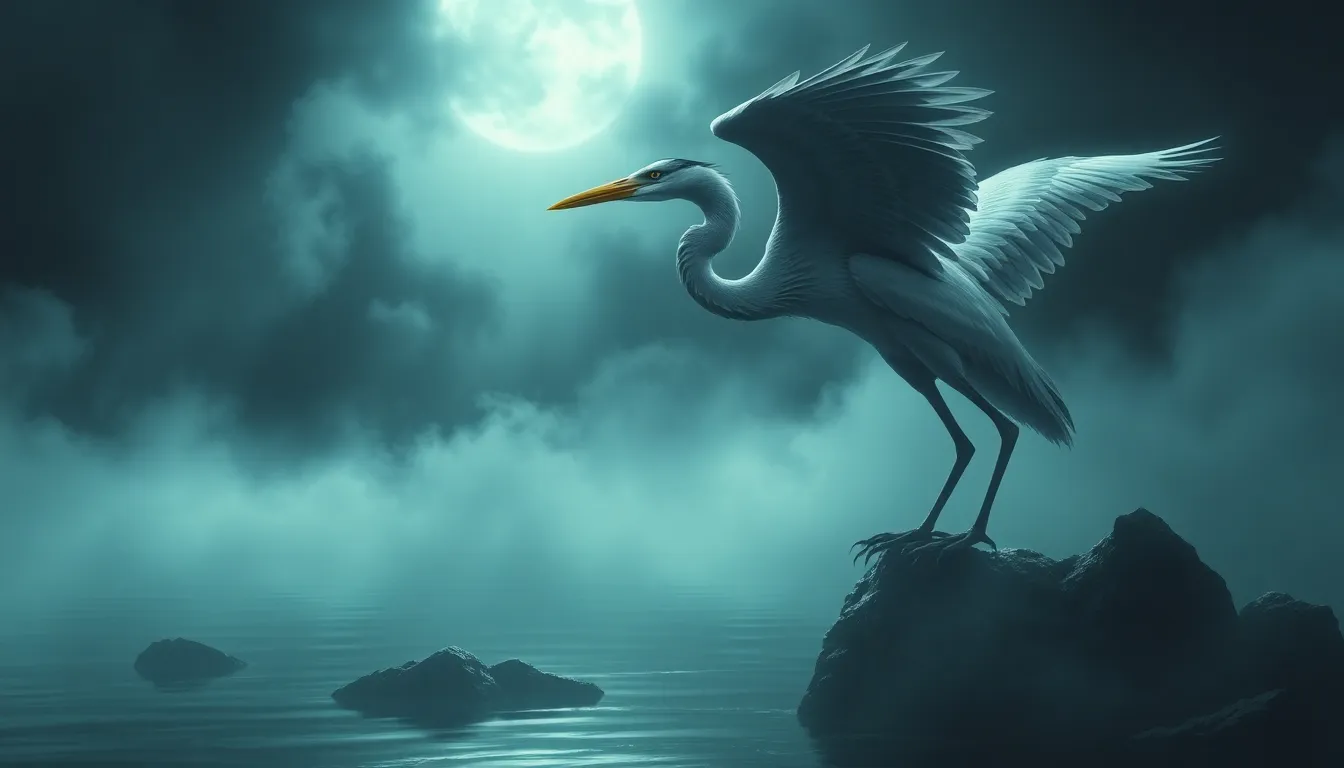Baltic Mythology: A Tapestry of Gods, Spirits, and Nature
The Baltic region, encompassing areas like Latvia, Lithuania, and Estonia, boasts a rich tapestry of mythology, a vibrant world of gods, spirits, and ancient beliefs that have shaped the lives and traditions of its people for centuries. Baltic mythology, unlike the more commonly known Greek or Roman mythologies, doesn't have a single, definitive collection of written texts. Instead, it's a living tradition passed down through generations in oral stories, songs, and folk practices. These narratives offer a fascinating glimpse into the worldview of the ancient Balts, revealing their understanding of the world, the forces of nature, and the complex relationship between humans and the supernatural.
The Divine Pantheon: Gods and Goddesses Shaping Baltic Beliefs
At the heart of Baltic mythology lies a pantheon of gods and goddesses, each representing a different aspect of nature and human life. These deities were not distant, abstract beings; they were actively involved in the world, influencing everything from the weather and seasons to the fate of individuals.
One prominent figure is Perkūnas, the thunder god, who dominated the skies and wielded the power of storms. His presence was a force to be reckoned with, and his wrath could bring devastation. Conversely, Dievs, the sky god, represented the benevolent aspect of the heavens, overseeing the cycle of life.
The goddess Žemyna was associated with the earth, its fertility, and the bounty it provided. Laima, the goddess of fate, shaped the destiny of individuals from birth to death.
These deities weren't just powerful beings; they were also deeply intertwined with the lives of ordinary people. People would offer prayers and sacrifices to them, seeking their favor and protection. Understanding the significance of these gods and goddesses provides a window into the Balts' reverence for nature and their belief in its active influence on their lives.
The World of Spirits: From Land and Sea to the Realm of the Dead
Beyond the divine pantheon, Baltic mythology is populated by a vast array of spirits that inhabit every corner of the world. These spirits weren't necessarily inherently good or evil, but they could be dangerous if angered or disrespected.
The forests were home to mežainis, forest spirits who guarded the trees and protected the wild creatures. Ūdens gari, the spirits of the water, resided in lakes, rivers, and the sea, guarding their domains and sometimes causing trouble for those who ventured into their realm.
Belief in veltėņi, spirits of the dead, was deeply ingrained in Baltic culture. They were believed to wander the earth, especially near their former homes, and could bring misfortune if neglected or angered.
The concept of a Velnias, a devil figure or embodiment of evil, also played a significant role. He was often depicted as a cunning and malicious being who tempted humans, leading them astray.
This complex network of spirits demonstrates the Balts' awareness of the unseen world and their respect for the forces that shaped their lives. They understood that the world around them was teeming with beings beyond human comprehension, and they needed to be mindful of their presence and actions.
Nature’s Influence: Trees, Animals, and the Elements as Sacred Entities
In Baltic mythology, nature wasn't simply a backdrop; it was a living, breathing entity imbued with spiritual significance. Trees, in particular, were held in high regard, often as sacred sites. The oak, with its strength and longevity, was considered a symbol of masculinity and power. The birch, known for its graceful beauty, was associated with femininity and purity.
Animals, too, occupied an important place in Baltic mythology. The bear, with its strength and ferocity, was both feared and respected, often seen as a guardian spirit or a symbol of the wild. The wolf, known for its cunning and intelligence, was often depicted as a trickster figure.
The elements of nature, such as fire and water, were seen as powerful forces that could be both beneficial and destructive. Fire, for example, was revered as a source of warmth and light, but it could also be a destructive force. Water, on the other hand, was a source of life but could also be dangerous, especially the vast and unpredictable sea.
This deep reverence for nature is evident in the many festivals and rituals that were centered around the changing seasons and the cycles of agriculture. It highlights the Balts' understanding that they were part of a larger ecosystem, dependent on the forces of nature for survival.
Folk Games and Pastimes: Embodiments of Baltic Mythological Beliefs
Baltic folk games and pastimes weren't simply forms of entertainment; they were often deeply intertwined with the beliefs and values of the culture, serving as a way to celebrate, connect with the spiritual world, and pass down important traditions. These games often reflected the importance of community, the reverence for nature, and the awareness of the supernatural.
The games themselves were often playful representations of events from mythology or depictions of the interactions between humans and the supernatural. For instance, the game of "Žirgai" (Horses), in which players would pretend to be horses and race each other, could be seen as a symbolic reenactment of the powerful mythical horse, Ašikas, who was believed to be a powerful being capable of transporting people between the worlds.
Other games, such as "Degutis" (Pitch), which involved tossing a stick into a ring, could be seen as a representation of the Balts' connection to the earth and their reliance on its bounty for their survival.
Dancing with the Spirits: Ritual Dances and Their Connection to the Supernatural
In Baltic mythology, dancing wasn't just a form of entertainment; it was a way to connect with the spiritual world and honor the ancient deities. Ritual dances held a deeply significant role in Baltic culture, serving as a bridge between the mundane and the supernatural. These dances weren't merely choreographed movements; they were expressions of reverence, prayer, and a desire to influence the forces of nature.
One of the most important dance rituals was the "Rati", performed during the spring equinox to celebrate the return of life and fertility. This dance involved intricate steps and movements that symbolized the rebirth of nature, the cycle of growth, and the promise of a bountiful harvest.
Another significant dance was the "Deju Diena" (Dance Day), held during the summer solstice, a time of celebration and feasting. This dance would often involve dancing around a bonfire, a symbolic representation of the sun's power and the strength of life.
These dances were not merely performances; they were believed to have the power to influence the spirits, appease the gods, and ensure a prosperous year. The rhythmic movements, the chanting, and the communal aspect of the dances created a powerful connection between the dancers and the supernatural forces they sought to honor.
Playing with the Elements: Games Inspired by Nature and Its Forces
Baltic mythology's close connection to nature is evident in the many games that were inspired by the elements. These games weren't just forms of entertainment; they were a way for children to learn about the world around them, understand the forces of nature, and develop skills that were essential for survival.
One popular game was "Vēja spēle" (Wind Game), which involved players mimicking the movement of the wind. They would spin, twirl, and run, trying to capture the feeling of the wind's energy. This game taught children about the power and unpredictability of the wind, a crucial element in the Baltic climate.
Another game, "Ūdens spēle" (Water Game), involved players splashing water on each other, symbolizing the cleansing and life-giving power of water. This game helped children understand the importance of water, a vital resource for survival and prosperity in the Baltic region.
These games not only provided entertainment but also served as a way to connect with the natural world, learn about its forces, and develop an appreciation for its power and beauty.
Narrating the Myths: Storytelling and Games as Vehicles of Tradition
Baltic mythology was passed down through generations through the power of storytelling. Stories about the gods, the spirits, and the heroes of the past were shared around campfires, in homes, and at gatherings, weaving a rich tapestry of tradition and belief.
These stories served as a way to teach children about their culture, their history, and their place in the world. They also provided a framework for understanding the natural world, the forces that shaped their lives, and the importance of respecting the spiritual realm.
Games played a crucial role in this process of passing down tradition. Many games involved elements of storytelling, with players taking on the roles of characters from mythology or enacting scenes from ancient tales.
For example, the game "Dieva mežs" (God's Forest), involved children acting out stories about the forest spirits and their interactions with humans. This game helped children understand the importance of respecting the natural world and the creatures that lived within it.
Theories of Influence: Exploring the Interplay of Mythology and Recreation
The influence of Baltic mythology on folk games and pastimes is undeniable. These games weren't created in a vacuum; they were shaped by the beliefs and values of the culture in which they originated. They reflected the Balts' reverence for nature, their awareness of the supernatural, and their desire to connect with the spiritual world.
Experts in Baltic mythology believe that these games served several purposes:
- Preservation of Tradition: They provided a way to pass down ancient stories, beliefs, and cultural values to younger generations.
- Social Cohesion: They fostered a sense of community and belonging, bringing people together through shared experiences and traditions.
- Spiritual Connection: They offered a way to connect with the spiritual world, honor the deities, and seek their favor and protection.
Enduring Legacy: The Influence of Baltic Mythology in Contemporary Games and Pastimes
Although the traditional folk games of the Baltics may seem like relics of the past, their influence can still be felt in contemporary games and pastimes. Elements of Baltic mythology, such as the importance of nature, the power of spirits, and the role of storytelling, continue to find expression in modern forms of entertainment.
For example, video games often feature elements of nature, fantasy, and the supernatural, drawing inspiration from the rich tradition of Baltic mythology. Modern tabletop games, with their emphasis on storytelling and collaborative play, also reflect the spirit of traditional Baltic games, where people gathered around to share stories and entertain one another.
The legacy of Baltic mythology is a testament to the enduring power of storytelling and the enduring connection between human beings and the natural world. Even as the world changes, these ancient beliefs continue to shape our understanding of the world around us.
FAQ
Q: What is Baltic Mythology?
A: Baltic mythology is a collection of ancient stories, beliefs, and traditions that originated in the Baltic region, encompassing modern-day Latvia, Lithuania, and Estonia. It's a rich tapestry of gods, spirits, and legends that offered a framework for understanding the world and the forces of nature.
Q: What are some examples of Baltic gods and goddesses?
A: Some prominent figures in Baltic mythology include: Perkūnas (the thunder god), Dievs (the sky god), Žemyna (the earth goddess), Laima (the goddess of fate), and Velnias (the devil figure).
Q: How did Baltic mythology influence traditional games and pastimes?
A: Baltic mythology deeply influenced traditional games and pastimes, reflecting the Balts' reverence for nature, their awareness of the supernatural, and their desire to connect with the spiritual world. Games often involved elements of storytelling, characters from mythology, or reenactments of events from ancient tales.
Q: Does Baltic mythology still influence contemporary games and pastimes?
A: While traditional folk games may seem like relics of the past, elements of Baltic mythology, such as the importance of nature, the power of spirits, and the role of storytelling, continue to find expression in modern forms of entertainment, including video games and tabletop games.



